- About MAA
- Membership
- MAA Publications
- Periodicals
- Blogs
- MAA Book Series
- MAA Press (an imprint of the AMS)
- MAA Notes
- MAA Reviews
- Mathematical Communication
- Information for Libraries
- Author Resources
- Advertise with MAA
- Meetings
- Competitions
- Programs
- Communities
- MAA Sections
- SIGMAA
- MAA Connect
- Students
- MAA Awards
- Awards Booklets
- Writing Awards
- Teaching Awards
- Service Awards
- Research Awards
- Lecture Awards
- Putnam Competition Individual and Team Winners
- D. E. Shaw Group AMC 8 Awards & Certificates
- Maryam Mirzakhani AMC 10 A Awards & Certificates
- Two Sigma AMC 10 B Awards & Certificates
- Jane Street AMC 12 A Awards & Certificates
- Akamai AMC 12 B Awards & Certificates
- High School Teachers
- News
You are here
Mathematical Treasures - English tally sticks
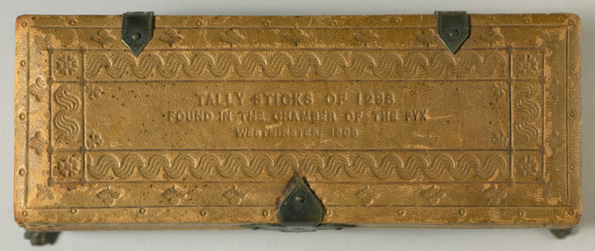
Notched pieces of wood or bone were used by many ancient peoples to record numbers. The most common type of these “tally sticks” was made of wood. Tally sticks served as records or receipts for financial transactions such as the payment of taxes, debts and fines. From the 12th century onward tally sticks were officially employed by the Exchequer of England to collect the King’s taxes. Local sheriffs were given the task of actually collecting the taxes. The depth and series of notches on these sticks represented the value of the transaction. In recording a debt, a wooden stick was often split horizontally into two parts: the lender receiving one part, the stock; and the debtor, the other part, the foil. This box contains sticks that date from the year 1296 and were found in the Chapel of the Pyx, Westminster Abbey in 1808. England abolished the use of tally sticks in 1826. The accumulation of tally sticks in the Office of the Exchequer were burned in 1834 resulting in a fire that destroyed the Parliament Building.
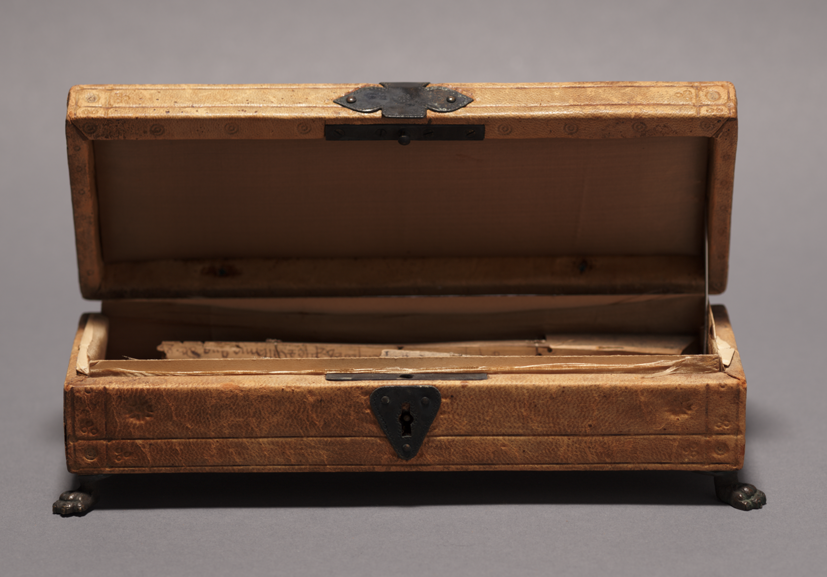
The box is opened and the tally sticks removed.
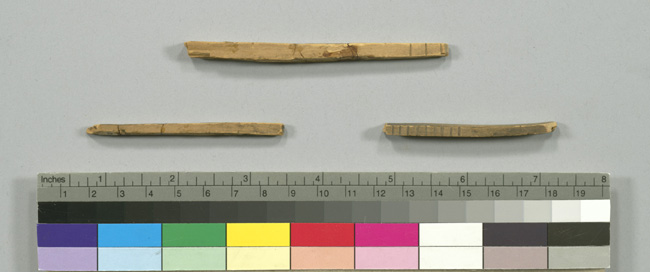
Close-up of three smaller sticks from the box showing notches.
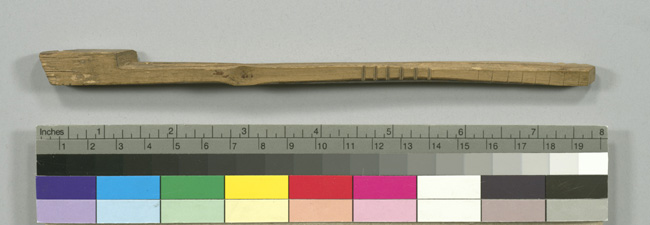
Close-up of large stick revealing notches.
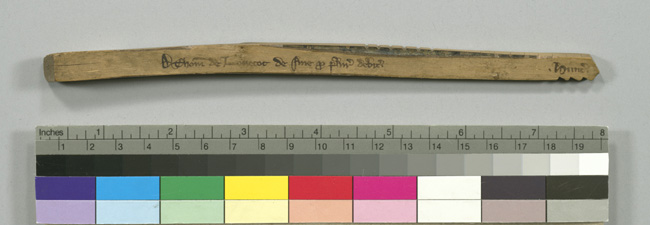
Second view of larger stick showing the name of the of King’s agent, William de Costello, Sheriff of London in 1296.
Index of Mathematical Treasures
Frank J. Swetz and Victor J. Katz, "Mathematical Treasures - English tally sticks," Convergence (January 2011)




